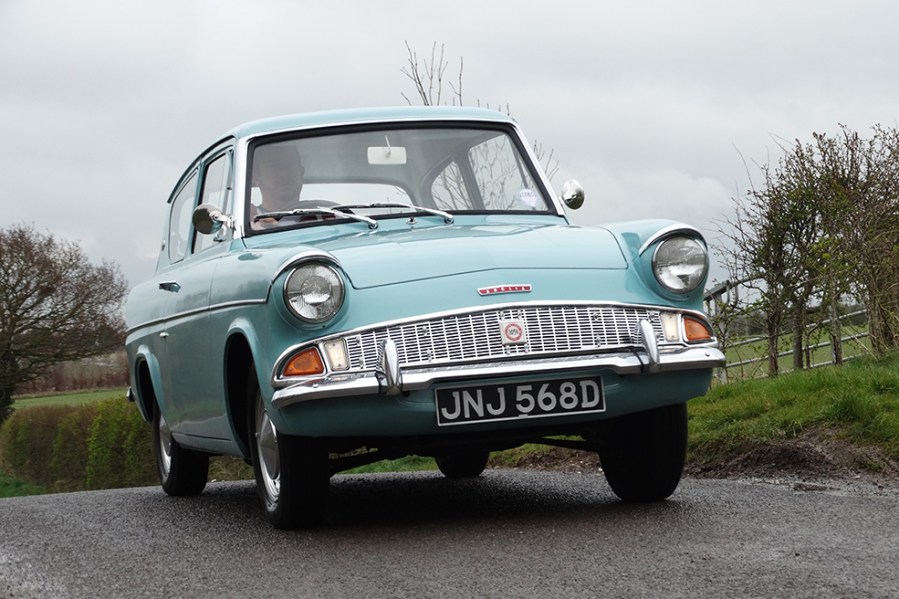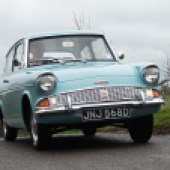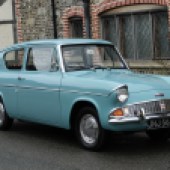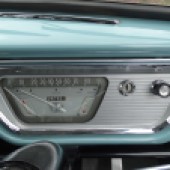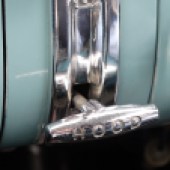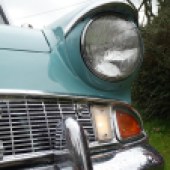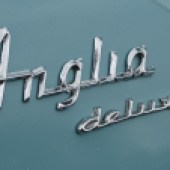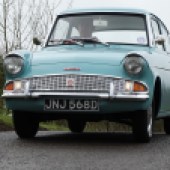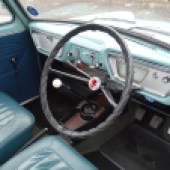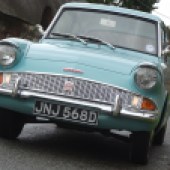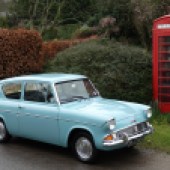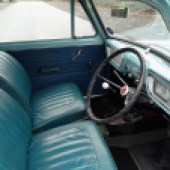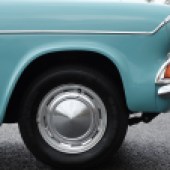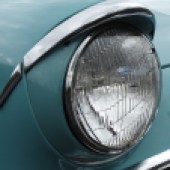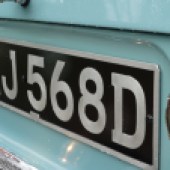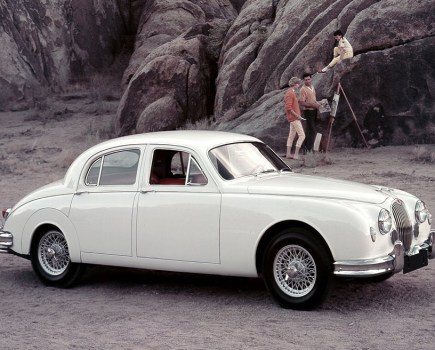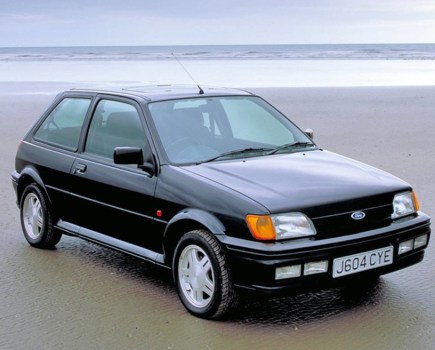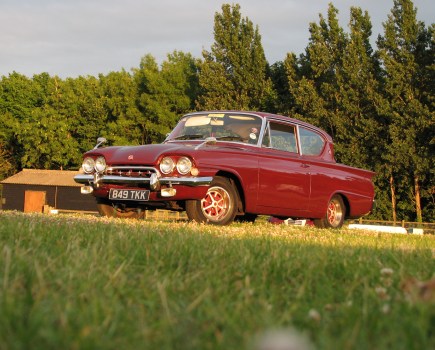No longer the classic bargain it once was, but the Anglia 105E remains a popular choice among Ford enthusiasts. Here’s how to buy one
Sponsored editorial in association with Lancaster Insurance
When a manufacturer launches a so-called ‘new’ model, it’s often little more than a facelift of its predecessor. But when Ford unveiled the Anglia 105E at the 1959 Earl’s Court Motor Show, just about the only thing it shared with the outgoing version was the name.
This truly all-new Anglia made a bold first impression thanks to its styling, most notably the reverse-rake rear window – a talking point then and now. Its gently sloping bonnet was flanked by front wings that pushed the headlamps well forward, enhanced by sharply designed brightwork. At the rear, tail fins emerged crisply from the boot line, their prominence heightened by the backward slant of the rear screen and smartly integrated indicators.
The innovations didn’t end with the styling. Beneath the distinctive bodywork sat Ford’s all-new over-square 997cc OHV engine – the first of the now-legendary ‘Kent’ family that would go on to power generations of Fords. Complementing it was a brand-new four-speed gearbox, the first time four forward gears had been offered on a small British Ford. Synchromesh on all but first made for a smoother drive, while a MacPherson strut front end and leaf-sprung rear axle gave the Anglia confident handling – a layout soon adopted across the Ford range.
At launch, only Standard and Deluxe saloons were offered. In 1961, Ford expanded the line-up with estate and van derivatives, but it was in 1962 that things got really exciting with the introduction of the Anglia Super. Codenamed 123E, this upmarket variant featured a 1198cc version of the Kent engine – the same unit fitted to the newly released Consul Cortina.
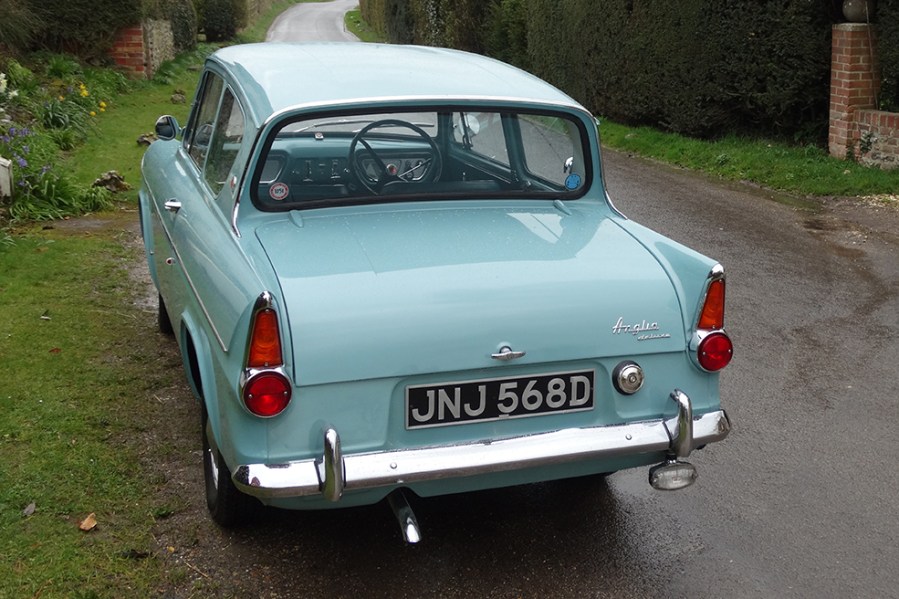
Performance took a noticeable step up, with a top speed of around 83mph and full synchromesh across all four gears, improving drivability. The Super also brought visual upgrades, including stylish two-tone paint with a chrome side flash and contrasting roof. Inside, it featured more substantial front seats, a padded dashboard top, and full carpeting – all adding to its more refined appeal.
That same 1198cc engine became optional on both the Deluxe saloon and the estate, giving buyers across the range more choice to suit their needs and budget. And with the Anglia’s combination of innovation, charm and practicality, it was no surprise that it proved a huge success both in the UK and abroad. Production ran until November 1967, by which time Ford had built an impressive 1,083,960 units – not including the van variants.
More than six decades after its debut, the Anglia 105E stands as a bold example of Ford’s willingness to take risks. Creating an all-new car from the ground up was a brave and costly move, but the gamble paid off. The Anglia became a bestseller – and remains a beloved classic with a strong following today.
As with many classic Fords from the 1960s, values have surged over the last decade. No longer a ‘cheap and cheerful’ entry point, the Anglia has cemented its status as a proper classic – one that continues to capture hearts and headlines alike.
Ford Anglia 105E values
If you’re hunting for a Ford Anglia 105E, prices vary widely depending on condition. Restoration projects now start around £1500-£2500 – but expect serious rust and missing parts. Usable, roadworthy examples typically range from £6000-£9000, offering a solid base for running restoration or regular classic use.
Top-tier cars – either low-mileage originals or well-restored examples – fetch £12,000-£16,000, with the very best nudging £20,000. Models like the 1200 Super may carry a small premium, but all 105Es are rising in value.
Insurance Costs
1963 Ford Anglia Deluxe, £9000 value.
Example quote: £109.97 or £127.97 with Agreed Value.Quotation supplied by Lancaster Insurance. Tel: 01480 400761
Quote based on a 45-year-old marketing manager, access to another car, no claims or convictions, club member, 3000 miles per year, no modifications, living in SP2 0HL. Disclaimer: Subject to underwriting criteria. An additional charge may be payable. Authorised and regulated by the Financial Conduct Authority.
Bodywork
While no more susceptible to rust than other monocoque saloons of the 1960s, the 105E/123E series can still suffer from serious corrosion if neglected. As such, it’s crucial when buying to inspect for structural deterioration as well as corrosion in the outer panels, particularly as replacements for the latter can be costly.
Starting with the shell, both inner and outer sills on each side are prone to rot, along with all four jacking points. There’s also a central sill section – hidden from view – which is equally vulnerable. The mounting points for the rear leaf springs can rust through, as can the rear crossmember and boot floor. It’s common to find holes in the floorpans, especially at the front corners and outer edges. The A-pillars are also known to rot, typically from the base upwards, which can ultimately affect the door hinge mounting points.
Under the bonnet, expect to see previous repairs to the flitch panels and the inner wings near the front struts – the latter often corrode from behind due to mud and salt being trapped underneath. If repairs have been made around the strut tops, ensure they’re of a proper standard and not simply hiding ongoing issues.
If the Anglia you’re viewing shows signs of structural rust, you’ll be relieved to know that reproduction panels are available from Ex-Pressed Steel Panels (steelpanels.co.uk). However, costs can mount quickly if you need several parts. A complete boot floor comes in at around £475 including VAT, rear spring hangers are upwards of £180 each, outer sills are nearly £193 per side, and an A-pillar outer skin panel is over £155.
Outer panels are similarly rot-prone, with front wings being a common weak point. Corrosion tends to appear around the headlamp area and at the rear edge of the wing, running vertically in line with the A-pillar. Genuine old-stock Ford wings are extremely scarce, but Ex-Pressed Steel Panels again offers solutions – albeit at a cost, with new wings priced at just under £1100 each and up to eight months’ lead time.
Doors also suffer, particularly in the middle section below the trim line, where the skin joins an internal panel. Rear wheelarches are another common rot spot, as are the lower parts of the rear quarter panels – though repair sections are available. The rear valance, while cosmetic, is often rusted too, and a replacement will set you back around £280.
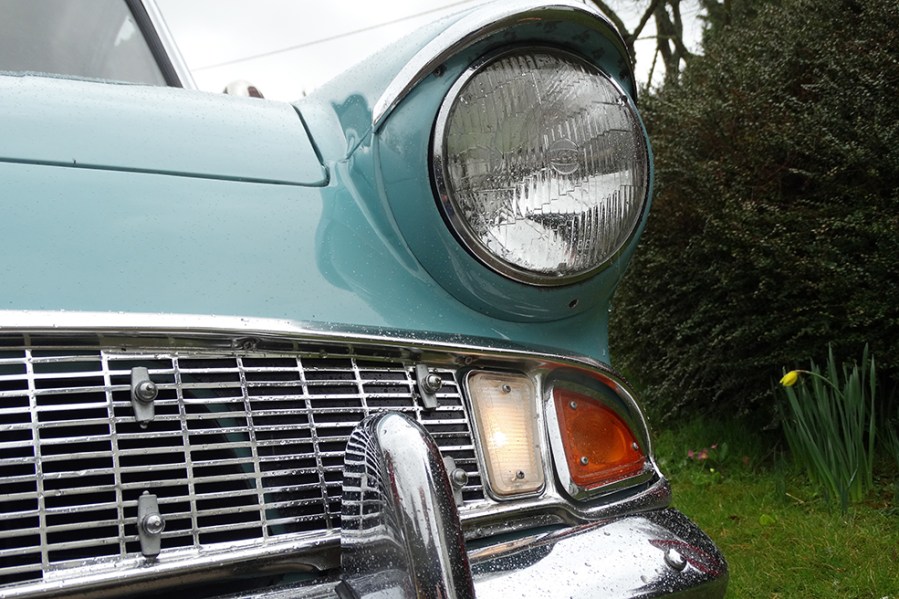
Engine and transmission
The 997cc Kent engine is generally regarded as more durable than its 1198cc counterpart, the latter having a reputation for premature bearing wear. That said, both engines can exhibit signs of fatigue, often indicated by a rumbling bottom end, excessive oil consumption, and blue exhaust smoke. Camshaft chain rattle is a common trait on both units, as is corrosion of the core plugs and the usual oil leaks.
A professional engine rebuild will typically set you back around £2000, although firms like Newford Parts (newpartsonline.co.uk) supply exchange units if originality isn’t your top priority. They also offer upgrade options – including the ever-popular conversion to the 1500cc version of the Kent engine originally found in the Cortina. It was a favourite mod in the ’70s and ’80s and still has strong appeal today. However, any notable power gains may call for corresponding upgrades to your Anglia’s brakes and suspension.
Gearboxes mated to both the 997cc and 1198cc engines are generally tough, but worn synchromesh – particularly second gear (and first on the 1198cc) – will result in noticeable crunching. A whining noise is another indicator of internal wear, while jumping out of second suggests issues with the selector rods. Oil leaks are common too, especially from the rear of the input shaft or around the diff’s nose bearing, where the built-in seal often perishes. A leak-free Anglia underside is almost certainly the sign of a recent restoration!

Interior
The Anglia’s interior is refreshingly straightforward. Standard and Deluxe variants came with hard-wearing rubber flooring, while the Super boasted the added comfort of carpet. All versions featured vinyl upholstery, though the patterns and colours evolved throughout production – early models often showcased eye-catching two-tone trim. The Super’s front seats are notably more padded and supportive than those in the Deluxe, though even these can show their age. It’s not uncommon to find worn-through vinyl or even springs beginning to protrude.
If your Anglia’s interior has seen better days, Aldridge Trimming (aldridge.co.uk) offers a variety of replacement options. These include new front and rear seat covers (starting from around £480 per pair), available in both single and two-tone colour schemes, as well as fresh door cards and rear side panels. They also supply full carpet sets and accurate reproduction headlining kits for a factory-fresh feel.
Perished front and rear screen seals are a known issue – replacements are readily available – so it’s wise to check for signs of water ingress. A musty smell or soft patches beneath the flooring can be tell-tale signs of hidden rot, so take the time to lift the coverings and inspect thoroughly.
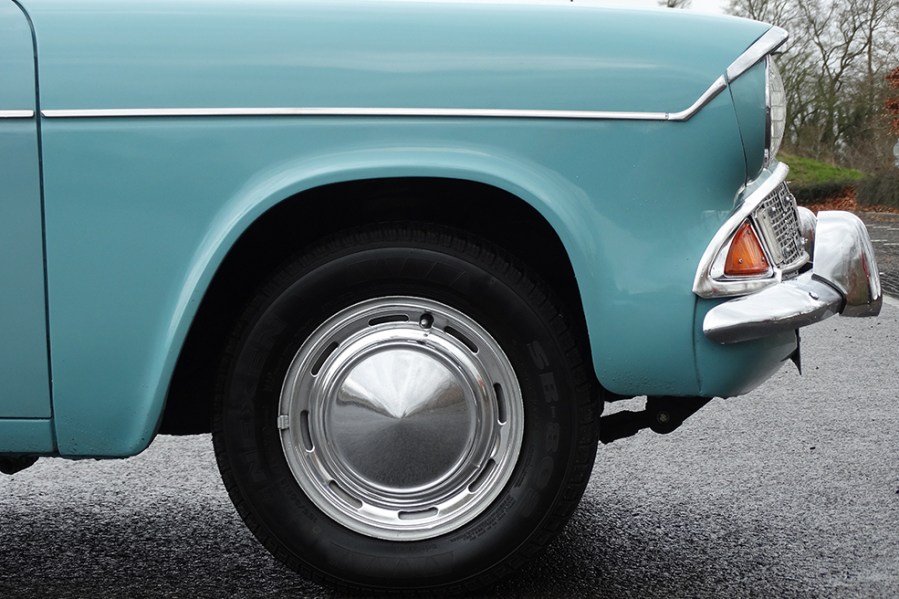
Suspension, steering & brakes
With MacPherson struts and coil springs at the front and leaf springs and lever-arm dampers bringing up the rear, the 105E’s suspension layout is typical of this era of Ford. Parts are readily available, and it’s certainly worth joining the Ford Anglia 105E Owners’ Club (105eoc.com) to take advantage of its excellent spares scheme.
In addition to the usual checks for leaking dampers, tired rear leaf springs and worn front struts (which you’ll notice if the handling feels unusually vague or bouncy), pay close attention to the condition of the strut top mounts in the engine bay. It’s not uncommon for the rubber to perish over time, compromising the integrity of the mount – Newford Parts sell rebuilt genuine front struts cost just over £175. Alternatively, you can purchase original-spec inserts at £125 apiece. New rear dampers are available from Small Ford Spares (smallfordspares.co.uk) for £151, though reconditioned units can be sourced from approximately £77 each.
If the steering feels imprecise or there’s a shimmy at speed, a worn idler joint on the drag link is the likely culprit. The Owners’ Club supplies a remanufactured drag link complete with a modified idler joint, and most steering components can be sourced either through the club or independent suppliers. Thankfully, the Anglia’s steering box setup is straightforward to work on for the home mechanic.
The Anglia’s all-drum, non-servo braking system is about as simple as it gets. It’s easy to service, and the parts are both affordable and easy to obtain. Newford Parts offers full axle sets of brake shoes for £60, with new master cylinders priced around £90 and wheel cylinders starting at just £20.
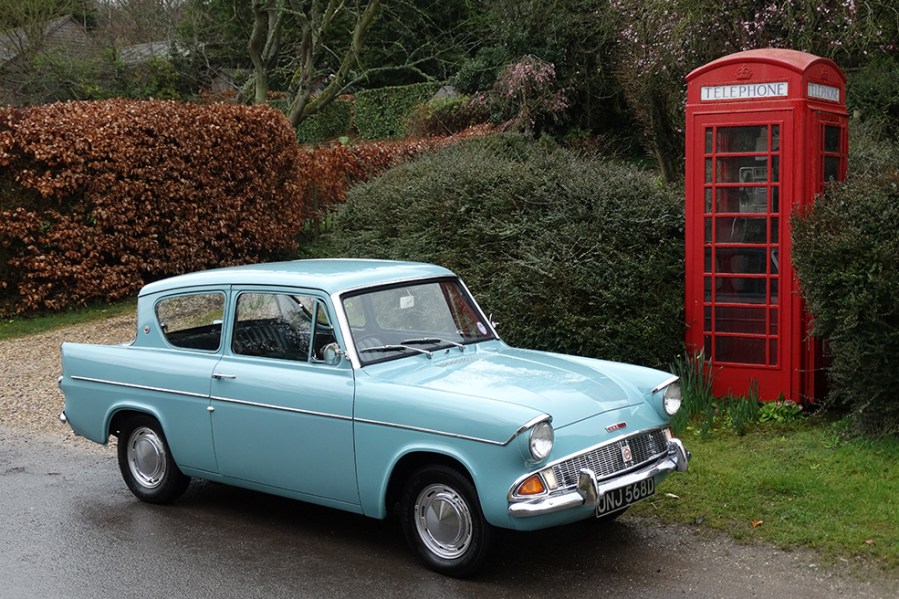
Ford Anglia 105E: our verdict
Blending glamorous Americana-esque styling with simple mechanicals, a variety of trim levels and body styles and compact dimensions, the Anglia makes for a hugely appealing ’60s classic. It might not be the bargain it once was, but values are only on the up and it’ll turn more heads now than ever, all while granting you access to the enormous and enthusiastic Ford community.
Ford Anglia 105E timeline
1959
Fourth-generation Anglia 105E arrives with transatlantic styling replacing the more traditional 100E
1961
Anglia-based Thames 307E vans arrive
1962
Tony and Michael Brooks average over 83mph at Montlhéry Autodrome in France, breaking six world endurance records
Anglia Super 123E arrives with larger 1198cc engine
1965
Anglia Torino 105 arrives, developed by Ford’s Italian subsidiary and featuring Michelotti-styled bodywork. The car was sold in Italy, Belgium, Luxembourg and the Netherlands
1967
Production ends with over one million 105E examples produced
The Anglia is replaced by the Ford Escort Mk1

